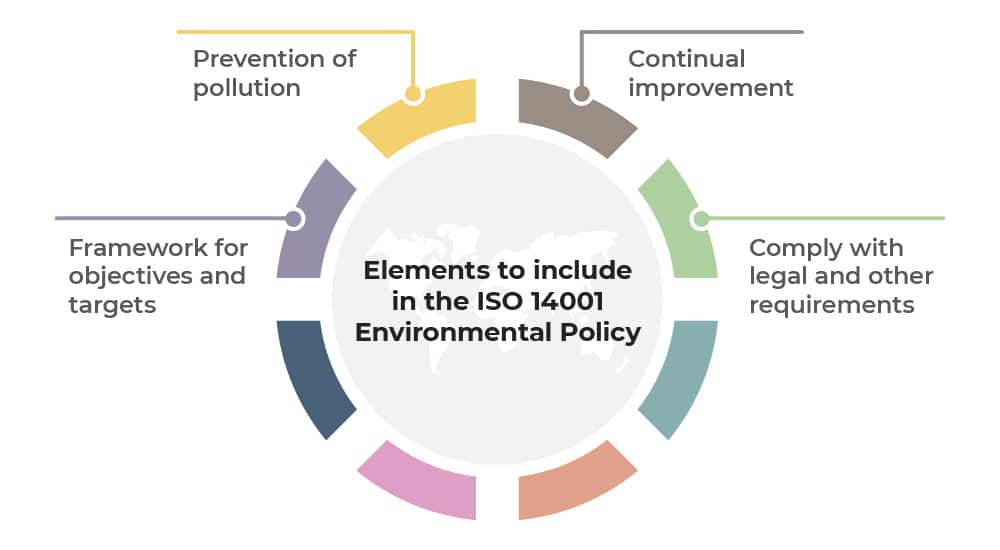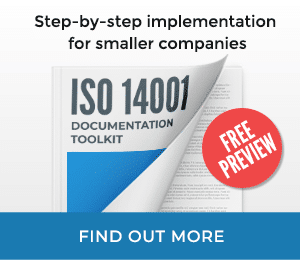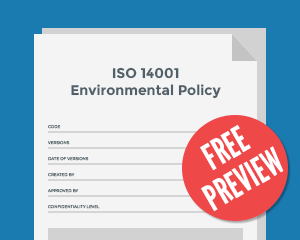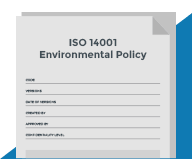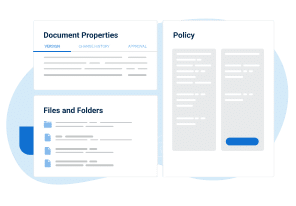ISO 14001 requires that the top management of the organization define an environmental policy for the organization. What is this policy about? How do you explain it to top management? How do you make sure it is adequate? What do you need to include? While the answers to these questions are different from company to company, here are some guidelines to help you define them at your organization.
- Continual improvement
- Prevention of pollution
- Comply with legal and other requirements
- Framework for objectives and targets
What is an environmental policy?
The ISO 14001 environmental policy outlines the overall intentions and direction of how the company will relate to its effect on the environment. This statement needs to come from top management, since it is a primary directive for how every individual in the company will perform their job in relation to environmental impact. This is where you display what commitments your company will make to controlling and improving the environmental impact that you make.
What needs to be included in the policy?
The environmental policy has some specific elements that are needed to meet the ISO 14001 requirements. Here are some explanations of what these are, and some ideas on how to address them.
Appropriate to the organization – This isn’t really an element that needs to be written in the policy; rather it is something that needs to be remembered throughout the writing of the policy. The environmental policy needs to be appropriate to the environmental impacts of your activities. If you are a company that is heavily dependent on the use and disposal of chemicals, then having an environmental policy focused on the waste created by your cafeteria would be incorrect.
Continual improvement – One of the main reasons for implementing any management system is to identify the processes in order to improve them. The environmental policy is expected to include a commitment to this concept of continual improvement in how your processes affect the environment. You don’t need to state how you will do this, just that you are committed to doing it.
Prevention of pollution – Another commitment that needs to be included as a basic part of the policy is for your company to prevent pollution. Again, you don’t need to document the how in the policy, but this should be something that you can easily direct someone to during an audit.
Comply with legal and other requirements – The last commitment that is needed in the policy is to comply with all legal and other requirements related to your environmental aspects. The environmental aspects are the identified way that you interact with the environment (see Environmental aspect identification and classification for more detail) and you need to agree that you will meet any laws or other stipulations that relate to these. Some examples could be clean air acts, waste water emissions or noise pollution laws.
Framework for objectives and targets – Here is where you get into the detailed information that is applicable to your company. You will need to set up plans to achieve some objectives and targets related to improving your impact on the environment, and these need to be consistent with your environmental policy. If you are setting a policy to monitor and reduce your environmental impact related to eliminating harmful chemicals used in the creation of your product, then your objective and targets will ultimately need to relate to this. Don’t put something into your policy that is unable to be acted upon with your improvement plans.
Some housekeeping requirements about the policy
Along with the above requirements on what needs to be in the policy, there are these additional requirements on how to create the policy and what needs to be done with the policy.
Documented, implemented and maintained – The environmental policy is one of the items in the management system that needs to be a written document. This can be in hard or soft copy, but it can’t be word of mouth. It also needs to be implemented, meaning that there have been plans made and resources assigned to make the commitments in the policy happen. As time goes on, the policy will also need to be reviewed and updated as the nature of the company’s environmental impacts change, and this is the maintenance of the policy.
Communicated to all employees – Employees need to understand what the company policy is and how their work actions affect the environmental impacts of the company. The policy doesn’t need to be memorized, but an employee should be able to understand what is meant and how they are involved in attaining the goal. In one training course I attended, the trainer told about auditing a company and asking an employee on the floor how his work impacted the environment if the company policy wasn’t met. The answer was “worse hunting and fishing.” For that employee, this was the reason to protect the environment. As a chemical company this demonstrated that the employee knew how contradicting the policy could impact the environment.
Available to the public – Unlike many management systems, the environmental policy is expected to be shared with anyone outside of the company who asks. This can be posted on the external website or made available by inquiry, but if someone wants to know what your policy is it should be readily available. This is how your investment in an environmental management system can become a publicity tool for your company.
Remember the environmental policy needs to be tailored to your company and how it interacts with the environment. Make the policy as simple as possible so that it is easily understood, but still meaningful to help your employees and others know what your company intends to do about improving its environmental impact.
You can download here a free preview of an Environmental policy template.

 Mark Hammar
Mark Hammar 